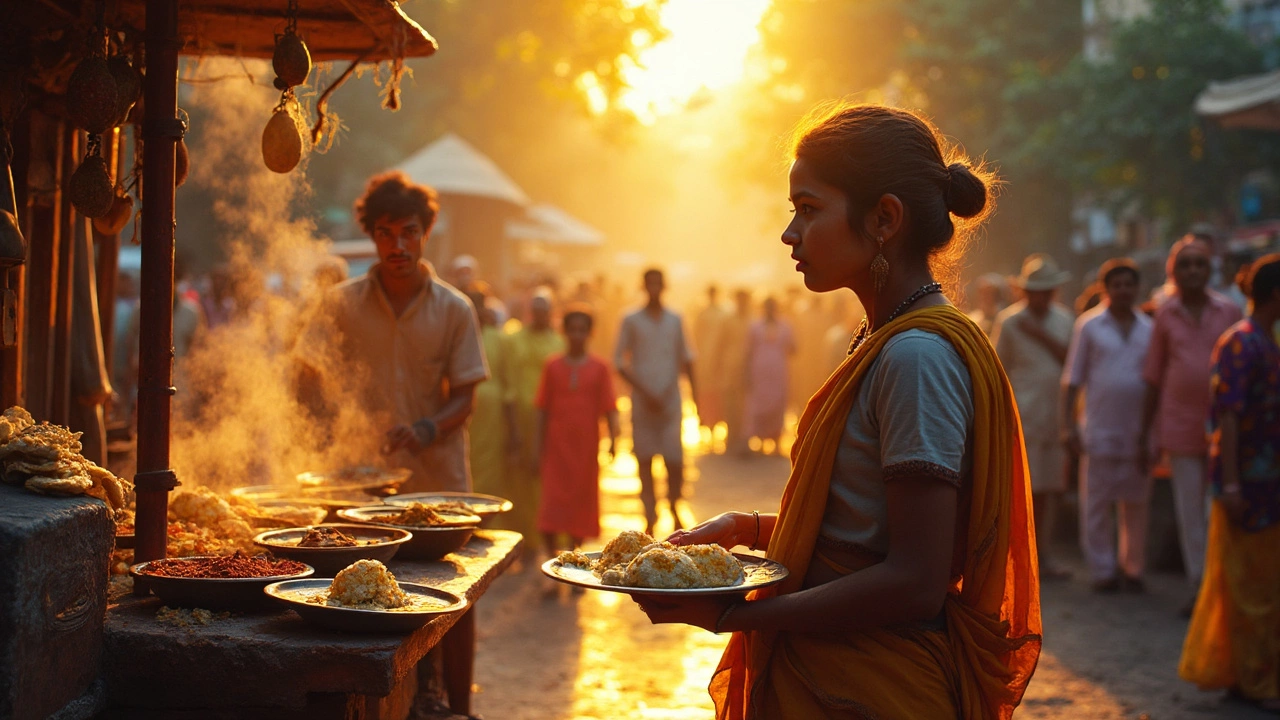Breakfast India: Your Guide to Authentic Indian Breakfasts
When you think about Indian breakfast, the first meal of the day packed with regional flavors, simple techniques, and comforting textures. Also known as morning Indian cuisine, it balances spice, protein, and carbs to fuel busy mornings across the subcontinent.
One of the most beloved breakfast stars is dosa, a thin, crispy crepe made from fermented rice and lentil batter. Dosa represents the South Indian tradition of fermentation, which brings a tangy aroma and improves digestibility. Another staple, paratha, showcases North Indian flatbread mastery; layers of butter‑floured dough create a flaky, buttery bite that pairs perfectly with pickles or yogurt. Both dishes illustrate how breakfast India embraces regional diversity while keeping preparation simple enough for home cooks.
Key Components That Make Indian Breakfast Unique
Every Indian breakfast rests on three building blocks: a grain base, a protein side, and a condiment. The grain base can be rice (as in idli or upma), wheat (paratha, poori), or millet (ragi pancakes). Protein often arrives as lentils, yogurt, or paneer, ensuring a balanced start. Condiments like chutney provide a burst of flavor—coconut, mint, or tamarind chutney each adds acidity, herbaceous notes, or sweetness, turning a plain batter into a vibrant plate. Together, these components form a semantic trio: grain → protein → condiment, a pattern that repeats across regions.
Timing matters, too. In the hot climate of Tamil Nadu, a light idli‑coconut chutney combo cools the palate. In the chilly hills of Punjab, a hot butter‑laden paratha with chickpea curry keeps you warm. This regional adaptation shows that breakfast India doesn’t follow a single recipe; it morphs to suit climate, culture, and daily schedule. The result is a cuisine that can be as quick as a 5‑minute poha or as involved as a multi‑day dosa fermentation.
Beyond the classic plates, modern Indian households are mixing health trends with tradition. Adding oats to upma, swapping white rice for quinoa in idli, or using whole‑wheat flour for dosa batter are popular tweaks. These changes preserve the core semantic relationship—grain, protein, condiment—while boosting fiber and micronutrients. Readers who follow our posts will find tips on how to adjust recipes without losing the authentic taste that defines Indian breakfast.
Our collection below covers everything from the science behind fermentation to the art of achieving perfectly puffed rotis for a hearty breakfast. Whether you’re hunting for a quick street‑food style masala dosa, a weekend brunch of stuffed parathas, or a nutritious low‑fat idli recipe, you’ll see how each article ties back to the key entities we just discussed. The posts also dive into related topics like how lemon brightens biryani, why baking soda affects roti texture, and ways to store chutney safely—knowledge that rounds out a complete breakfast toolkit.
Ready to explore the full range of morning flavors? Scroll down to discover step‑by‑step guides, nutrition facts, and troubleshooting tips that will help you master Indian breakfast at home. Each article builds on the core ideas of grain, protein, and condiment, giving you a practical roadmap for every sunrise kitchen adventure.

Best Country Breakfasts: What Makes India's Unique?
Exploring what makes a country's breakfast truly remarkable, India stands out with its diverse and flavorful options. This article delves into the different components of Indian breakfasts, from regional specialties to health benefits. Readers will discover why a typical morning meal in India is not just food but an experience that can rival any global favorite. Learn about the ingredients, cooking methods, and cultural significance that make India's breakfast one of the best in the world. Get tips on how to replicate these breakfasts at home.